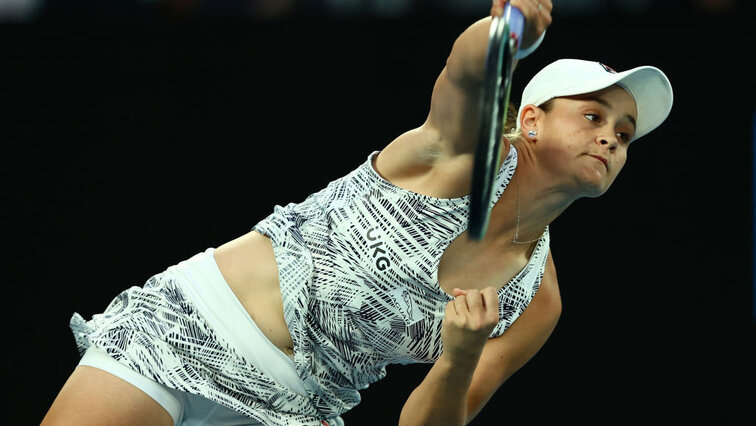Learning from Ashleigh Barty - is that possible?
Ashleigh Barty cemented her top position in the WTA world rankings with her success at the Australian Open. Final opponent Danielle Collins would like to borrow from the Australian.
by Jens Huiber
last edit:
Jan 31, 2022, 11:51 am

Danielle Collins was in no rush at the awards ceremony following her final loss to Ashleigh Barty at the Australian Open. Collins, who has an eventful history of illness behind her, not only thanked her team, the organizers, etc., but also briefly addressed her conqueror: She would take the variability of Barty's game as an example, try it herself, for more variety to care.
The American is quite capable of that, Collins works very purposefully towards her success. Initially extremely successful in the US college system, for a few years now also on the WTA tour. Tomorrow, Monday, Collins will be listed among the ten best players in the world for the first time. Hard work pays off. And it will be interesting to see which variations Collins will unpack in the coming months.
Barty also attacked with the slice
However, Ashleigh Barty's playing system is quite unique on the WTA tour. It starts with the serve. No other player has so many opportunities to vary speed and spin or kick when opening the game. While Aryna Sabalenka, Barty's first pursuer in the rankings, is happy these days if she throws in a throw-in at all, Ashleigh Barty, after a straight service through the middle, simply takes the tempo out of the service at the next opportunity and hits with a cut to the outside.
And then of course Barty's backhand slice. Comparisons with that of Roger Federer are inappropriate, as the three-time major winner in Melbourne said herself. But like Federer, Barty not only uses the undercut ball on defense, but also as an offensive stylistic device. Like Angelique Kerber, by the way, in her best phase. Of course, this requires years of practice, building confidence in your own slice skills. It is unlikely that Sabalenka will fillet balls like Ash Barty in the near future. The Belarusian is more likely to decide that she just needs to hit the ball harder than she already is.
Djokovic, Nadal, Federer are constantly improving
However, the Australian Open showed that Ashleigh Barty is not invulnerable either. Despite not losing a single set in the entire tournament. But if you are able to keep the Australian in the backhand corner at high speed and possibly also follow the balls, you can calculate good chances of winning a point. Collins should have won the second set in the final, with Amanda Anisimova also close in the round of 16.
Which Ashleigh Barty knows, of course. And why she works with her coach Craig Tyzzer on her swinging backhand. Because that is what characterizes the very best on both sides of the tennis spectrum: that they constantly want to improve. It doesn't matter whether you already have the status of an active legend like Novak Djokovic, Rafael Nadal or Roger Federer.
